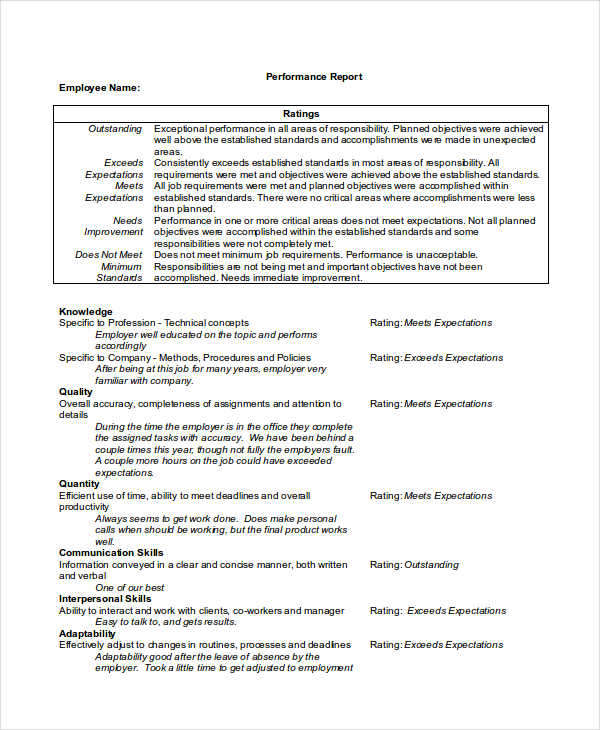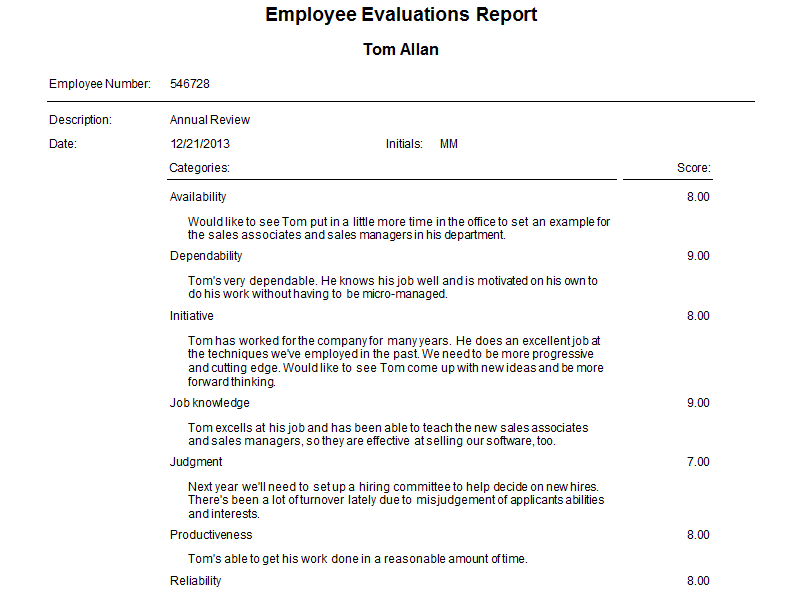Introduction
An individual or a team can describe a statement as a document that assesses the results of several different activities that occurred over a time frame (Performance Report, n.d.). It is a valuable business tool. A well written report combines analysis, information, honesty, and sensitivity. The individual or team that receives a performance report are to act when there is a negative observation (Bragg, 2018). These performance reports assist both the employer and the employee (Why Performance Reviews are Important, 2018). They allow the employer and the employee to understand how he or she improves in comparison to earlier reviews (Why Performance Reviews are Important, 2018). This report speculates whether an employee is ready to take up more responsibility. Performance reports also determine whether an employee is fit for a raise based on their performance and ranking (Why Performance Reviews are Important, 2018). It also presents whether noteworthy achievements are enough to warrant a bonus. Performance reports highlight skill imperfections and call attention to where a staff member could use further preparation (Why Performance Reviews are Important, 2018). Furthermore, it is a way for an employee to select classes to train for further responsibilities (Why Performance Reviews are important, 2018). The feedback an employee acquires is helpful in demonstrating how the staff member put his or her skills and advantages to the best use (Why Performance Reviews are Important, 2018). Performance reports are simple ways to guarantee that the employer and employee are in agreement. In addition, performance reports present feedback that can enhance future performance (Why Performance Reviews are Important, 2018).
How to Write a Performance Report
Start with positive praise. The review should begin with Identifying unmet goals. The reviewer should be precise about what they did not approve of in the report (Jackson, 2012). They should offer fair and appropriate commentary if the missed goals turned out too adequate based on certain circumstances. The reviewer should not be too vague (Jackson, 2012). They should include constructive criticism in the performance report (Davis, n.d.). It is common for performance reports to evaluate traits instead of the behavior or the results of the evaluated individual (The DOs and DON’Ts of Performance Reviews, n.d.). The report should highlight only the behaviors and results of the individual (The DOs and DON’Ts of Performance Reviews, n.d.). Do not compare employees to one another. They are valuable for their individual work. Recent activity should not be the main focus of performance reports (Davis, n.d.). This does not mean you should avoid the topic, but it should also not cloud the employee’s general performance throughout the year (Davis, n.d.). Doing this will help prevent bringing any stress into the evaluation (How to Write a Performance Review: Everything You Need to Know, n.d.). If the individual does not uphold feedback, the reviewer should address the issue in a performance report (How to Write a Performance Review: Everything You Need to Know, n.d.). The report should provide honest information about any mistakes or weaknesses that the individual should enhance (How to Write a Performance Review: Everything You Need to Know, n.d.).
Identify constructive feedback. Spend some time on areas where the employee can improve. Again, constructive feedback should be specific. Reviewers should talk about maximizing the employee’s strengths. Also, the reviewer should always show respect. An employee who feels respected is more receptive when told of performance problems.
Outline expectations for the future. This is a great launching point in the conversation about the employee’s growth and the future expectations. Reviewers should make sure to always end a performance review on a positive remark. This is done by reassuring the employee, noting any assets, and showing their value in the company (How to Write a Performance Review: Everything You Need to Know, n.d.). There must be a follow-up plan put in place at the end of the performance appraisal. Creating an action plan is the perfect way to conclude an effective performance review discussion. It should be simple. It should be positive and practical (How to Write a Performance Review: Everything You Need to Know, n.d.).
Conclusion
Performance reports are routine for business purposes, but it functions in other ways. For example, colleges have a way for students to evaluate their professors. These evaluations benefit both professors and students.
References
Admin. (July 21st, 2015). How to Write a Performance Review. Retrieved from Kallyas Theme: https://www.customwritingservice.org/blog/how-to-write-a-performance-review/
Bragg, S. (May 21st, 2018). Performance Report. Retrieved from Accounting Tools: https://www.accountingtools.com/articles/2017/5/25/performance-report
How to Write a Performance Review: Everything You Need to Know. (n.d.). Retrieved from Up Counsel: https://www.upcounsel.com/how-to-write-a-performance-review
Performance Report. (n.d.). Retrieved from Business Dictionary: http://www.businessdictionary.com/definition/performance-report.html
The DOs and DON’Ts of Performance Reviews. (n.d.). Retrieved from American Management Association: https://www.amanet.org/training/articles/the-dos-and-donts-of-performance-reviews.aspx
Why Performance Reviews are Important. (April 17th, 2018). Retrieved from Optimum Employer Solutions: https://optimumhr.net/the-importance-of-performance-reviews/



